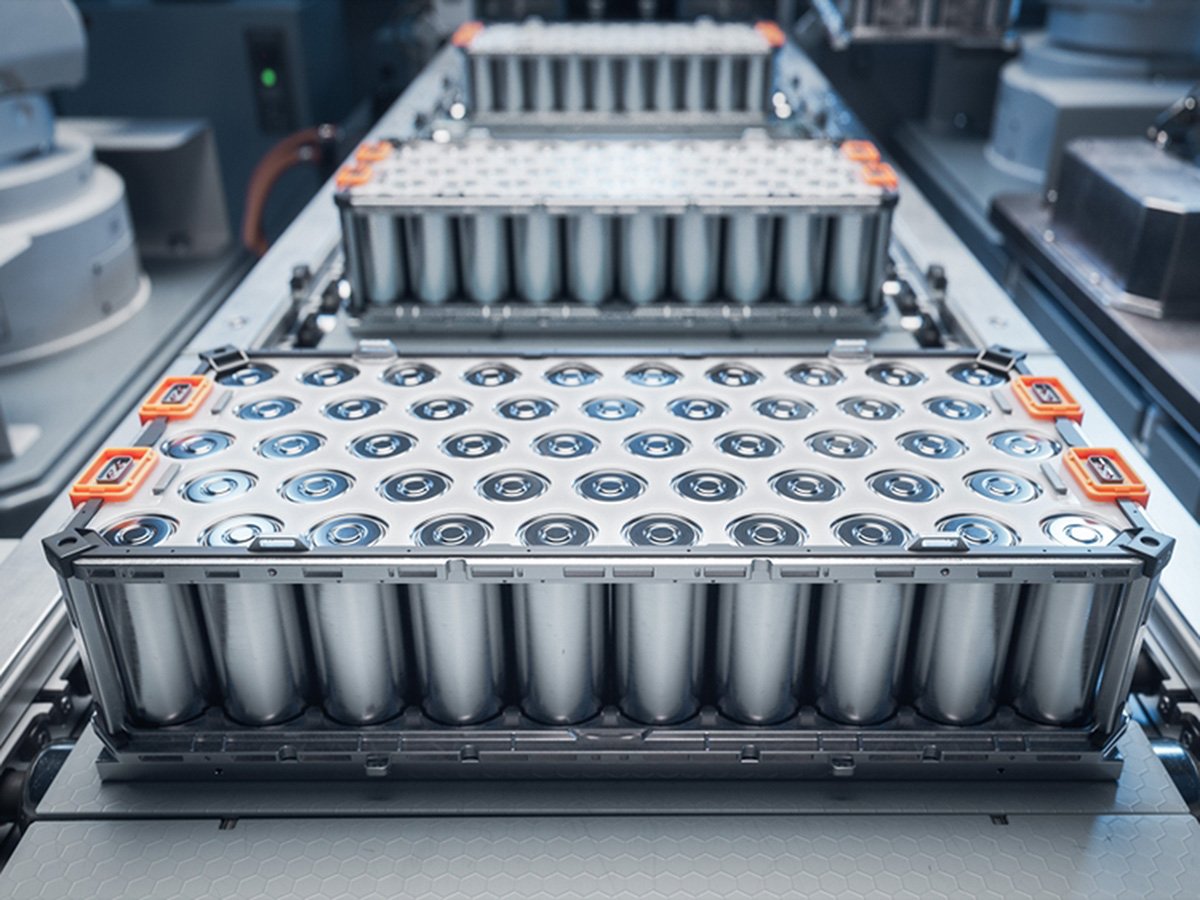
The world is rapidly electrifying, and batteries are at the heart of this renewable energy transition. From powering electric vehicles (EVs) to providing backup for homes and grids, batteries are becoming increasingly crucial. This surge in demand is driving significant growth in battery production, creating exciting opportunities for investors. However, it’s essential to understand the fundamentals of EV batteries so you can better understand the companies in the battery supply chain.
The Backbone of Electrification: Why Batteries Matter
Batteries are crucial in enabling the renewable energy transition. They store energy generated from intermittent sources like solar and wind, ensuring a steady power supply.
For electric vehicles, batteries serve as the heart, powering sustainable transportation and significantly reducing carbon footprints.
Home backup batteries provide resilience against outages, while grid backup systems enhance energy reliability and integration.
Grid battery mega packs provide utilities with the flexibility to store excess energy during peak production and release it during high demand. They also help to stabilize and smooth out power surges and provide better quality electricity to the grid.
Overall, batteries are essential in creating a cleaner, more sustainable future. But what are the current battery technologies? And what battery technologies are on the horizon?
Understanding the Current Battery Landscape
The most common types of batteries being produced today are lithium-ion (Li-ion) batteries, which come in various chemistries:
Lithium Iron Phosphate (LFP) Batteries:
Lithium Iron Phosphate batteries are known for their thermal stability and longevity, making them an excellent choice for many applications
- LFP batteries are known for their high safety, long lifespan, and low cost.
- They are widely used in electric vehicles and energy storage applications.
- LFP batteries contain a high percentage of iron
Lithium Nickel Manganese Cobalt Oxide (NMC) Batteries:
NMC batteries offer higher energy density, which is ideal for EVs that require significant range without sacrificing weight.
- NMC batteries offer higher energy density and performance compared to LFP batteries.
- They are commonly used in high-performance electric vehicles and consumer electronics.
- NMC batteries utilize nickel, manganese, and cobalt
Understanding the differences between these types is crucial for assessing the best options for different applications.
The Future of Energy Storage: Emerging Battery Technologies
As the energy landscape continues to evolve, promising battery technologies are on the horizon.
Sodium-ion Batteries:
Sodium-ion batteries present a noteworthy alternative to traditional lithium-ion solutions. Utilizing abundant sodium resources, these batteries can potentially lower costs and reduce dependency on lithium, especially as demand surges.
- Sodium-ion batteries use sodium as the charge carrier instead of lithium, which is more abundant and less expensive.
- They have the potential to offer improved safety, longer lifespan, and lower cost compared to Li-ion batteries.
Lithium-Sulfur (Li-S) Batteries:
Lithium-sulfur batteries are another exciting development, offering higher energy densities and an environmentally friendly profile compared to conventional lithium-ion batteries.
- Li-S batteries have a high energy density, making them a promising option for electric vehicles and energy storage applications.
- They use sulfur as the cathode material, which is less expensive and more abundant than the materials used in Li-ion batteries.
Solid-state Batteries:
Solid-state batteries hold much promise due to their enhanced safety and efficiency. These technologies could fundamentally shift energy storage paradigms and reshape the EV battery landscape.
- Solid-state batteries use a solid electrolyte instead of the liquid electrolyte found in Li-ion batteries.
- They have the potential to offer improved safety, higher energy density, and faster charging times.
Sourcing the Future: Materials Needed For Batteries
Successful battery technologies hinge on the availability of essential materials. For instance, LFP batteries primarily require lithium, iron, and phosphate, while NMC batteries depend on lithium, nickel, manganese, and cobalt. The exact material percentages can significantly influence battery performance and cost, highlighting the importance of robust supply chains.
LFP Batteries:
- Key materials: Lithium, iron, phosphate, and graphite
NMC Batteries:
- Key materials: Lithium, nickel, manganese, cobalt, and graphite
Emerging Chemistries:
- Sodium-ion: Sodium, phosphate, and carbon
- Li-S: Lithium, sulfur, and carbon
- Solid-state: Lithium, solid electrolyte material (e.g., ceramic, polymer)
The current sources for these materials are primarily concentrated in China, which has dominated the battery supply chain. However, with increasing government regulations and the push for more localized and sustainable supply chains, there is a growing opportunity for North American mines and other global sources to emerge.
Regulatory Changes and Sourcing Opportunities
Current sources for these materials often traverse global geography, but changing government regulations are steering sourcing strategies towards North American territories and other regions.
These regulatory changes present a significant opportunity for investors and companies to capitalize on the growing demand for battery materials, particularly in North America. By securing reliable and sustainable sources of the necessary materials, these players can position themselves as key players in the battery industry.
Conclusion
In summary, the demand for key materials such as lithium, iron, nickel, manganese, cobalt, sodium, sulfur, and solid electrolyte materials will only continue to grow as the demand for batteries increases.
Companies and investors who secure reliable sources of these materials now have the potential to become leaders in the rapidly evolving battery industry.
So it is essential that we continue to prioritize the development of these materials and their sources to meet the growing demand for batteries around the world.
This requires not only investment in research and development, but also in building sustainable supply chains that support a more localized production of battery materials.
By staying informed on regulatory changes and investing in emerging sources of these key materials, companies and investors can position themselves to benefit from the change in the status quo from fossil fuels to new more efficient and sustainable energy sources.
Discover more from Renewable Riches
Subscribe to get the latest posts sent to your email.



